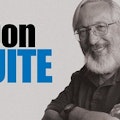Hypothesis: Doing away with the code requirement last March has completed a rejuvenation of ham radio that was triggered by the World Trade Center attacks and Katrina. I’m looking for reader comments yea and nay.
What set me off: I’m listening on the local 2-m repeater the other week, and there’s a QSO in progress. One ham tells the other that he just passed the test for his Amateur-Extra rating, and he’s looking forward to learning the code so he can go DX-ing on HF!
(I’m going to do as little translation of ham jargon as possible in this posting, because I’m talking to engineers who have undoubtedly encountered ham radio before and because even the non-hams in this audience ought to be able to figure out what I’m saying from context.)
That said, the one thing that I need to state explicitly is that last March, the U.S. FCC did away with any skill test for Morse code for any class of license, i.e., for access to any ham frequency band, including the ones below 21 MHz that allow easy worldwide communication. (This is consistent with global ham licensing.)
What I’m curious about is whether what I’m seeing in Silicon Valley is representative of what’s happening across the U.S. and Canada. So, I’m soliciting your feedback.
The Preparedness Angle
Right here, between the Palo Alto Amateur Radio Association (PAARA) and the Foothill Amateur Radio Society (FARS), we have an incredible concentration of people with ham licenses who were also founders of well-known technology companies (or who are in the process of founding technology companies that are likely to become well known). I don’t know the hams across San Francisco Bay as well, but I’m not sticking my neck out very far to say that they’re probably as well gifted with gurus (“Elmers” in ham-speak) as we on the Peninsula.
That talent pool wouldn’t be worth mentioning, though, if it weren’t for the realization that people in the San Francisco Bay Area are living on top of some very squirrely real estate. When the Big One comes, and the Golden Gate and Bay bridges come down, anybody trying to escape from the north end of the peninsula will have to go through San Mateo and Santa Clara counties. Across the bay, all the hospitals sit on top of the Hayward fault, which nobody knew existed when the hospitals were built.
So a lot of people here are actively thinking about what they’re going to do when the worst happens. For me, it started when my wife Vicky started a neighborhood Community Emergency Response Team (CERT). (You need to do this yourselves.) The Sheriff’s Department guy who taught our classes is a ham. He turned us on to the local South County Amateur Radio Emergency Services (SCARES) group, which has been planning for decades with local first-responders. (FWIW, my call is NR7X. Vicky’s is N7HBJ. We’re 7s because we were licensed first in Oregon.)
At every SCARES meeting, there are more and more new hams who got into ham radio because they want to be useful in an emergency. The people who conduct the training courses and administer the testing are inducting 50 or more new hams a month, and if those folks aren’t showing up at SCARES meetings, they’re showing up at the Red Cross, the sheriff’s communication group, and other emergency preparedness organizations.
The Bigger Picture
Wouldn’t you know it, there’s still interesting non-emergency stuff showing up in ham radio. People get together at club meetings, at flea markets, at the monthly get-together at the Stanford Linear Accelerator (kudos, KE6PFF), and on the air (check out www.9amtalk.net). And that’s where people who thought maybe ham radio would be useful for emergency communications meet people who’ve been chasing rare DX for half a century and get the urge to study for higher grades of license. (BTW, the tests ain’t easier just because the code’s gone. All that’s happened is that the modes have changed.)
At least, that’s what it’s like in Earthquake Country. Tell me what it’s like where you live.
Since you ask, I was first licensed in 1960 as WV2LJI. I learned the code from 78-rpm U.S. Army Signal Corps records, coming to high school at 7 in the morning to get the practice time. My first rig was a rock-bound 80-m homebrew built around a TV horizontal-oscillator tube and a Halliscratchers S38.
Related Articles:About the Author

Don Tuite
Don Tuite (retired) writes about Analog and Power issues for Electronic Design’s magazine and website. He has a BSEE and an M.S in Technical Communication, and has worked for companies in aerospace, broadcasting, test equipment, semiconductors, publishing, and media relations, focusing on developing insights that link technology, business, and communications. Don is also a ham radio operator (NR7X), private pilot, and motorcycle rider, and he’s not half bad on the 5-string banjo.